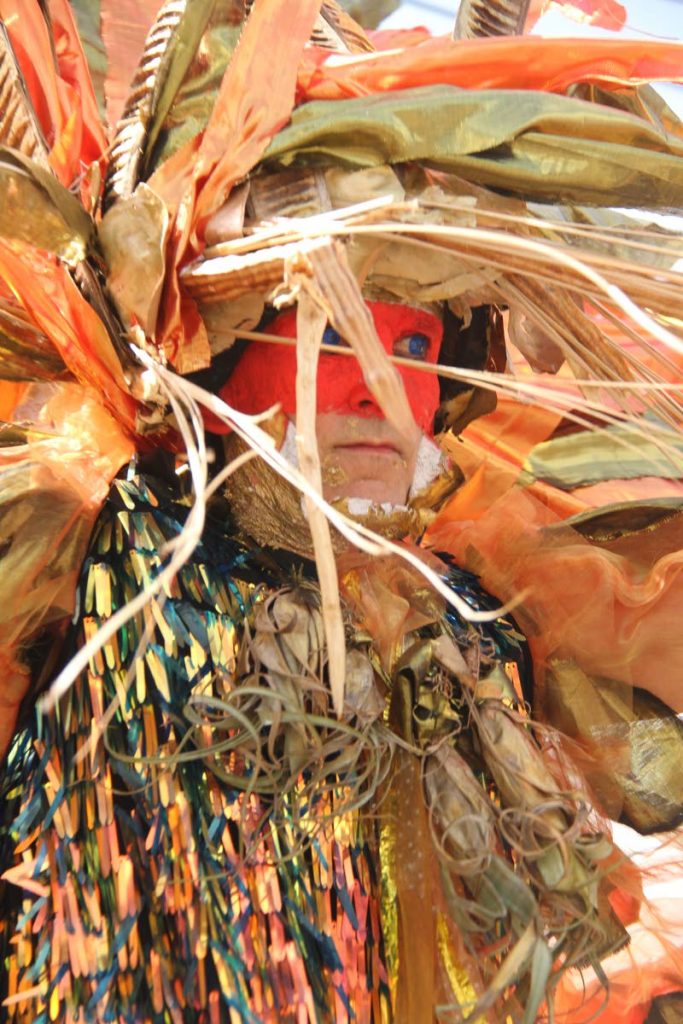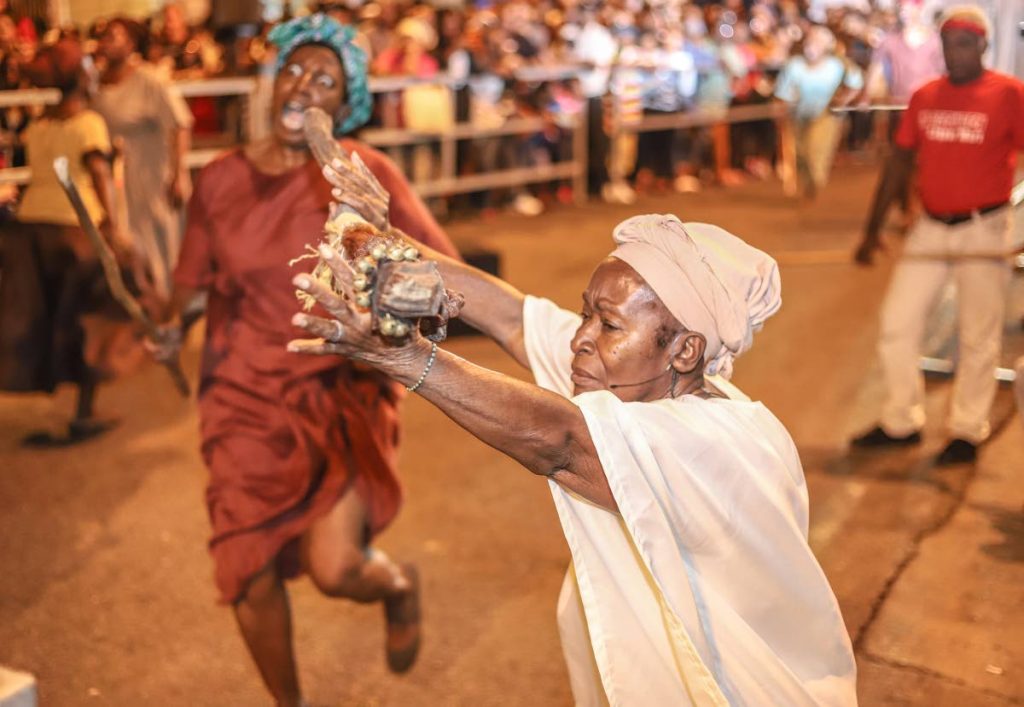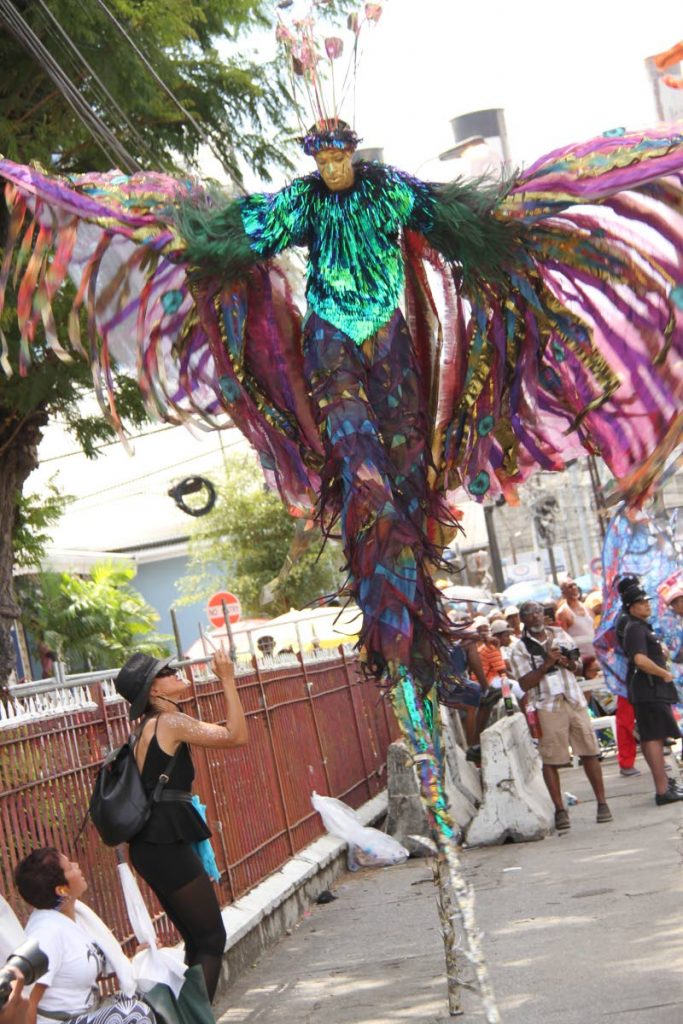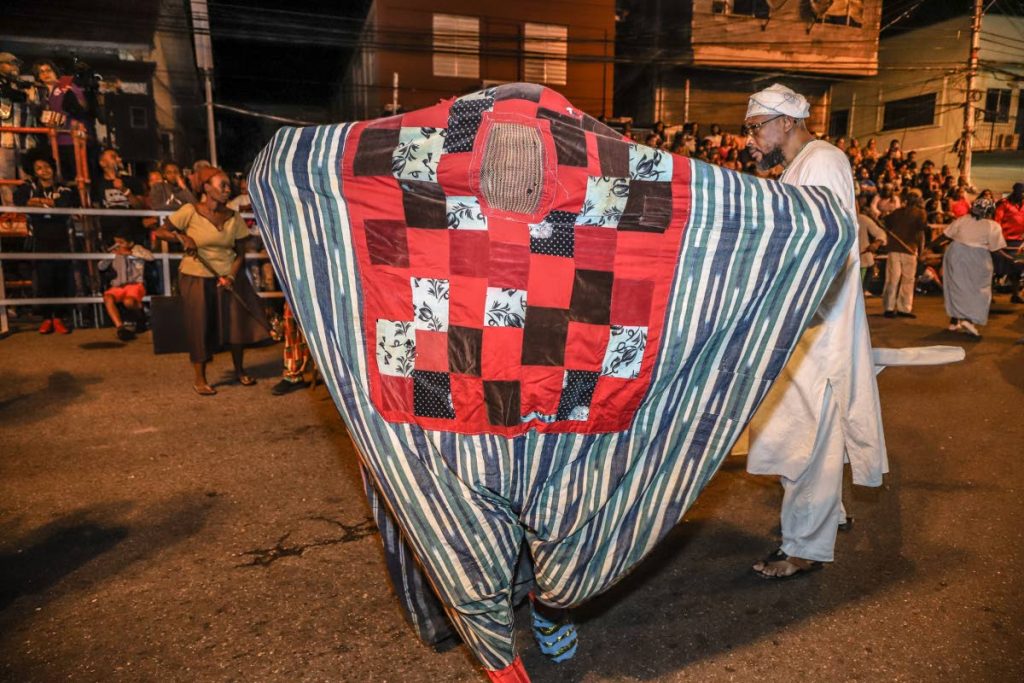Spirits and mas

Three people – a Canboulay activist and poet, a mas artist and small bandleader, and a photographer/author – speak in their own words about what the sacred means for them in Carnival, as told to SHEREEN ALI, who asked them: Do you think religious symbolisms, or expressions of spirituality and the sacred, have a place in Carnival?
Eintou Pearl Springer
Founder of the National Heritage Library; traditional storyteller and poet; playwright and director of annual Kambule celebrations; African heritage cultural activist; member of family enterprise Idakeda Ltd:
There is a deep heritage of African spirituality in our Carnival traditions, a heritage that is often not known or widely recognised. Because too many people think Carnival is just what you see on TV. It is much more than that. There are so many elements of African spirituality in the mas. The Africans who came to Trinidad all had masking traditions linked to their spiritual beliefs, for instance, the egungun tradition in which masked people played the role of the ancestors.

The Laventille-Belmont area was once called Yoruba Town because at the end of enslavement and in the indentureship period, many thousands of Yoruba people came to settle there. That is the reason you have so many traditional masquerade forms coming from Belmont and Laventille. They are legacies of the Yoruba sacred science passed down.
In Trinidad, there used to be bands called Shango bands in the 19th century Carnival, in the post-Emancipation period. They were laughed at and derided, and eventually disappeared… But in 2001, an Ifa Orisha group called Egbe Onisin Eledumare spearheaded the creation of a Carnival band called “401 meets 2001” (401 is the number of Orisha deities in the traditional Yoruba pantheon). The following year, another Orisha group called IESOM (Ile Eko Shango Oshun Milosa) brought out a band. And after that for quite a few years, a shrine from Petit Valley would bring out bands, and they did quite well.
Now in addition to this, in our Canboulay, we have been bringing the (West African Orisha) egungun ancestral masquerade back out on the street as part of Carnival. That mas comes out from a shrine called Ile Isokan, an Ifa/Orisa organisation from Lower Santa Cruz. The egungun tradition has been seen in different forms throughout the Caribbean region. It appears as the pierrot grenade in Trinidad, as the pitchy-patchy in Jamaican junkanoo.
Orisha also has a preoccupation with animals; the Yoruba believe there is an unending link between people and animals; so you may see that coming out in some of the animal mas on J’Ouvert morning.
Mud mas is a link to the Orisha creation myth: Obatala (the child of god) creates the human being out of a special mud. So the use of mud in J’Ouvert to “open the day” is apt.
Alan Vaughan
Artist, costume designer and moko jumbie; bandleader of Moko Somõkõw, Belmont, Trinidad; co-founder of Linskill & North Tyneside Community Development Trust, which runs the Linskill Community Centre, North Shields, UK:

I would say that the spiritual side is a fundamental part of what I do to create a mas. My mas is conceived through tuning in to a particular voice or narrative. As moko jumbies, we celebrate a long history, derived from the story that the moko spirits walked across the Atlantic following the slave ships providing spiritual sustenance to the enslaved. The sticks become as an altar – linking the earth and a spiritual force surrounding us like air in the sky. It is through the ritual robing of mas that we let the power enter us – and, certainly for me, it is an embracing, eclectic, ever-evolving force which is open to mark and celebrate the pain and joy of life. And, from the former cane-fields, to the savannah and streets of Port of Spain, it is moving to walk and dance our mas with nuance and reflection on those spaces and the people who passed there before us. At times, it can be overwhelming.
Kevin Adonis Browne

Author of the 2018 photo-essay book: High Mas: Carnival and the Poetics of Caribbean Culture; Postgraduate Coordinator, Literatures in English, Dept of Literary, Cultural, and Communication Studies, UWI:
People who want freedom are driven as much by spirit as by rage. Of necessity, their respective religious beliefs and practices come to bear in everything they do. It’s how beliefs are understood and expressed. So the short answer to both these questions is “Yes, of course.” One can’t look at a midnight robber, la diablesse, jab jab, black Indian, or blue devil and think otherwise. What’s more, there would be no Carnival otherwise – there could be none without these elements to drive the mas, elements from which so much mas is derived. This would be true whether we choose to admit it or choose, instead, to believe that this festival of ours is all about sponsorships and overpriced fêtes.
Fortunately for us, we’ve always been more than that, more than a hollow parade of flesh and fabric. We talk about feeling the Carnival spirit and being possessed by a Carnival jumbie. We know what that means, even if we sometimes struggle to make sense of it.
If we understand that the tensions at the heart of Carnival were not only about race and class, but also about what people believed – what we still believe – then the presence of religious symbolism should come as no surprise. History tells us this – well, it should. When we think of the way Carnival began, and how desperate we are to find meaning in a cynical world, it would be impossible to deny that these symbols have no place. We exist in the midst of religious ritual, spiritual understanding, and human appetite. It’s what happens when a culture finds itself based on reverence and revelry. They’re inseparable, as are we. That makes us both lucky and blessed. A good thing, either way, because it means we get a(nother) chance to understand the fundamentally aspirational nature of our Caribbean humanity.
* Spirits and mas concludes Shereen Ali’s three-part series on spirituality in Carnival. The first two were Carnival: Sacred or profane? (March 3) and Mas divinity (March 10).


Comments
"Spirits and mas"